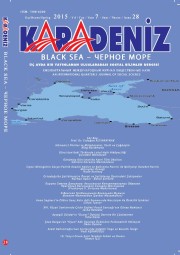Ortadoğu’da Şattülarap’ın Önemi ve Şattülarap Üzerindeki Çekişmeler
The Importance Of Shatt Al-Arab In Middle-East And Conflicts Because Of Shatt Al-Arab
Author(s): Nurhan Aydın, Bahar ŞentürkSubject(s): Military history, Recent History (1900 till today), Inter-Ethnic Relations, Geopolitics
Published by: Kültür Ajans Tanıtım ve Organizasyon
Keywords: Shatt al-Arab; Iran-Iraq; Fight; Border; Süleyman Askeri Bey; England; The Middle East;
Summary/Abstract: Middle-east is a very important place because of its geographic position in the world trade and important maritime lines as Suez Canal, Persian Gulf, Çanakkale-İstanbul straits and Mediterranean ports and important highways which connect them. An important maritime line is Shatt al-Arab where Tigris and Euphrates rivers combine. Nations have fought for this region throughout the history. The reason why they fought was that this region is very fertile and the water is as precious as oil. Shatt al-Arab region became a problem between Ottoman Empire and Iran. During wars, Iran closed Shatt al-Arab for the transportation in the river. The countries which had intention to occupy lands of Middle-east interfered this situation. England and Russia held a mediatory position. Because of its position, England had the opportunity to have transportation in Shatt al-Arab as it wanted. England was even the first country to have right to operate ships in Shatt al-Arab. Later, Russia, Germany and Iran also made use of this advantage. Since Britain knew the importance of Shatt-al Arab, it occupied Fav place which is at the opening of Shatt al-Arab during the World War I. Ottoman Empire appointed Suleyman Askeri Bey to fight for that place; whoever, he had to retreat. The developments in the region lead to the consequence that England guaranteed a place in Middle-east, which was the beginning of giving today’s shape to Middle-east. The problem of supremacy over Shatt-al Arab or shortly the problem about the borderline between Iran and Iraq was one of the most serious problems. The war outbroke between these two countries after Iraq’s aggression against Iran on 20 September 1980 in order to occupy this maritime line which was in the control of Iran. This aggression went in Iran’s favour because Iran took back its lands which had been occupied by Iraq before. After the Iran-Iran war was known as War of Cities of Gulf War after the forces which were appointed on the border line and which were collected in definite pointes became chronic with manoeuvres that were far from big strategies. The war which was fought in Persian Gulf during the Iran-Iraq war is known as Gulf War in the military and political literatures.
Journal: Karadeniz Uluslararası Bilimsel Dergi
- Issue Year: 2015
- Issue No: 28
- Page Range: 63-75
- Page Count: 13
- Language: Turkish

